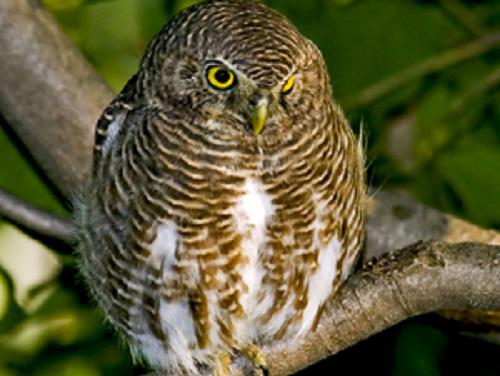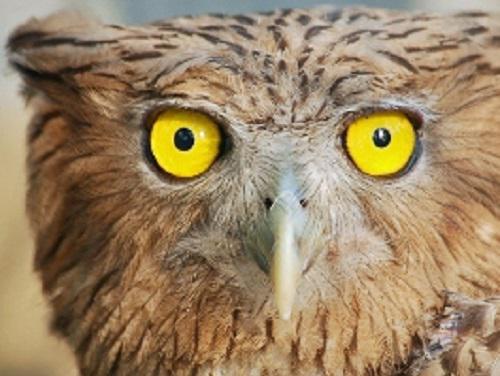Udayan Borthakur
Other projects
13 Jul 2011
Survey and Conservation of Owls in the Protected and Unprotected Areas of Meghalaya, India
This project aims at obtaining baseline data on multiple owl species occurring in the Brahmaputra valley, Assam, primarily their occupancy, distribution, nesting habits and potential threats for survival of owls in unprotected areas and to generate awareness through community participation.

Asian Barred Owlet, Glaucidium cuculoides. © Udayan Borthakur.
The Brahmaputra Valley ecoregion comprises a network of protected areas covering about 2,500 km2 of forest, or 5 percent of the total area which also encompasses part of the state of Assam. The ecoregion harbours rich avifaunal life, with 20 species of the order Strigiformes (Owls) reported so far form Assam, out of which 3 species belong to the subfamily Tytonidae and 17 species from Strigidae (Choudhary A. 2000). Apart from one species (Asio flammeus ) which is winter migratory, remaining 19 species are resident.

Bubo zeylonensis.
Multiple species of owls are found in close association with various agricultural areas, apart from some species which are strictly forest dwellers. This makes owls highly vulnerable to the present agricultural practices in the valley, where the main economy is dependent on agriculture. Moreover, clear-felling and conversion of forested land into agricultures is predominant in the valley.
Meaningful owl conservation efforts have hitherto not been undertaken in the area, because of deficiency of baseline information. Moreover local communities are as yet unaware of the potential importance of owls as a natural pest control agent. Thus, it is necessary to survey the area for owl distribution and status, to sensitize and involve local people in conservation efforts in unprotected areas.
The study will generate baseline information on owl species presence and distribution from the area. Field survey data on location and habitat association along with historical records of species will facilitate in identifying priority areas for owl conservation. We address this project in unprotected areas because in protected areas owl populations are considerably secure due to given legal protection to their habitat. We plan to involve private land owners in this conservation awareness initiative through the introduction and monitoring of nest boxes for owls in their land. Active participation of volunteer groups (for e.g., in nest box monitoring) will ensure future participation in other programs with intrinsic conservation value.